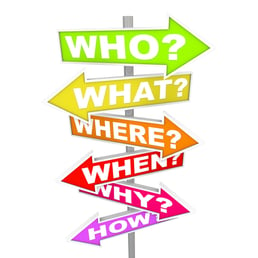 It’s important to think of your retail store’s signage as a comprehensive system. You could place random signs around the store, but without cohesive design and obvious purpose, they will simply add clutter and confuse customers. Signage communicates visually with shoppers, telling them how to efficiently navigate your store. You have specific directional signs to help customers find restrooms, dressing rooms, etc. Designed well, signage systems will also suggestively sell by directing traffic to unplanned purchases, using physiological cues that influence shoppers to buy.
It’s important to think of your retail store’s signage as a comprehensive system. You could place random signs around the store, but without cohesive design and obvious purpose, they will simply add clutter and confuse customers. Signage communicates visually with shoppers, telling them how to efficiently navigate your store. You have specific directional signs to help customers find restrooms, dressing rooms, etc. Designed well, signage systems will also suggestively sell by directing traffic to unplanned purchases, using physiological cues that influence shoppers to buy.
Here are 8 inexpensive ways to boost the power of your signage system:
- An effective signage system might include maps, printed or digital signs, and end cap displays. Across all formats, however, every sign should reflect your brand. So incorporate your logo or other graphics unique to your store. The colors and materials you choose should complement your store’s décor but contrast enough to stand out.
- Use color or easily recognizable symbols to differentiate departments.
- Make sure you have enough signage and that the message conveyed by each sign is simple and clear. Fun design can highlight your store’s personality, but readability matters most.
- Minimize text. Use a simple font that is easily readable from the distance shoppers will see it. Use strongly contrasting colors — not light hues or white or dark hues on black or red.
- Signs incorporated as part of individual displays divert traffic by drawing shoppers in a particular direction. Displays themselves can also do that with clever use of color and design. With the right signage, endcaps can serve as both product destinations and also stop shoppers in their tracks as they pass by.
- Be creative about placement. Hanging signs are great for higher ceilings and larger spaces. You can also hang signs in the window or on the wall. You can post them on freestanding placard holders or tabletop stands, affix them directly to merchandise or fixtures, or display them on the front edge of shelving.
- Display-specific signs should identify the product but focus on why customers should buy it. Will they be happier, better looking, more popular, more relaxed? Saving money is always good, but signs that connect with your customer’s emotions will sell more.
- Don’t forget that your storefront is part of your signage system. You cannot direct traffic within your store until you inspire shoppers to step inside.
Why not just let shoppers wander on their own?
Because they won’t. If customers cannot easily understand and navigate your store, they will leave, and they will not be tempted to return for another frustrating experience. A cohesive, well-designed signage system not only drives traffic to your merchandise: It creates a positive, pleasant in-store experience. By making it easier for customers to shop, you’re helping them find what they came for and leave with a few “discoveries” as well.
